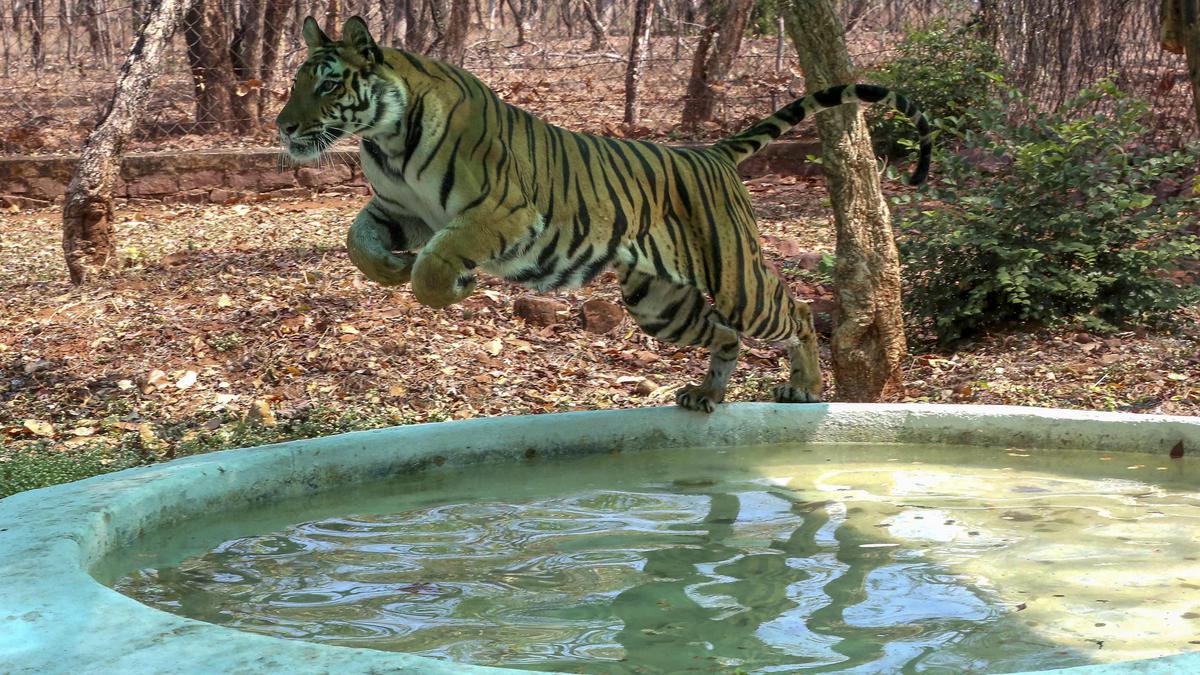What’s in today’s article?
- Why in News?
- Tiger Census in India
- Highlights of the Fifth Tiger Census Cycle Event
- What are the Persisting Threats Facing the Tiger Across its Habitats?
Why in News?
- The 5th cycle of Tiger Census, an evaluation of tiger reserves in India released by the PM of India, has estimated the number of big cats in the country (interim figures) at 3,167 in 2022 (increased by 200 or 6.7% in the past four years).
- The 2018 Tiger Census (released in 2019) had established the presence of 2,967 tigers in India.
Tiger Census in India:
- After the Sariska Tiger Reserve debacle (2005, Rajasthan), where despite total local extinction of tigers, official records showed presence of substantial tigers based on the pugmark census.
- This disaster prompted the PM of India to appoint the Tiger Task Force (TTF) with a mandate to develop a strategy for tiger conservation in India.
- Besides recommending the creation of the National Tiger Conservation Authority (NTCA), etc, the TTF also suggested a country wide monitoring of tigers and their ecosystems.
- NTCA in collaboration with the Wildlife Institute of India (WII), has conducted a national assessment for the “Status of Tigers, Co-predators, Prey and their Habitat” every four years since then.
- The first status assessment of 2006 was peer reviewed by the International Union for Conservation of Nature (IUCN).
Highlights of the Fifth Tiger Census Cycle Event:
- Interim figures of Tigers in India released:
- After identifying individual tigers from camera-trapped photos, the WII uses the Spatially Explicit Capture-Recapture (SECR) method to estimate the range of tiger abundance.
- In the interim, the minimum estimated figure of 3,167 tigers is comparable with the lower limit of the range (2,603-3,346) estimated in 2018, implying a gain of over 500 tigers.
- The numbers of tigers in areas where tigers are present but not camera-trapped are yet to be extrapolated.
- 50 years of Project Tiger (1973):
- To mark this, the PM inaugurated the International Big Cat Alliance, the first of its kind in the country.
- Addressing the event, the PM noted that India is the largest tiger range country in the world.
- 75% of the world’s tiger population was in India and that the country had seen a 75% growth in the population of big cats over the last 10-12 years.
What are the Persisting Threats Facing the Tiger Across its Habitats?
- Shivalik Hills and Gangetic Plains: Expansion of road infrastructure between the western and eastern part of Rajaji tiger reserve.
- Implementing green infrastructure will be key to the recovery of tigers in this fragmented landscape.
- Central Indian Highlands and Eastern Ghats: Tiger occupancy declined in Jharkhand, Odisha, Chhattisgarh, and Telangana.
- The big cat went extinct locally in Kawal tiger reserve (Telangana), Sri Venkateswara national park (Andhra Pradesh), Satkosia tiger reserve (Odisha), Sahyadri tiger reserve (Maharashtra).
- Mitigation measures like lower-impact mining techniques, rehabilitation of mining sites and eco-friendly structures to lessen the impact of linear infrastructure should be the priority.
- Western Ghats: While the tiger populations inside the reserves remain stable (Mudumalai, Periyar) or have increased (Bandipur, Nagarahole), the tiger occupancy outside has declined in stretches such as the Wayanad landscape and in BRT Hills.
- North Eastern Hills & Brahmaputra Plains Landscape: Despite having habitat connectivity, many of the protected and forested areas are devoid of tigers.
- The rapid development of linear infrastructures and several hydroelectric projects could potentially disturb the existing corridors and natural habitats and further alter the gene pool.
- Ecological monitoring outside protected areas is necessary.
- Sunderbans: Vulnerable to climate change and submergence from sea level rise, the deltaic region faces a substantial amount of accretion and erosion every year.
- Fishing, palm and timber extractions, and growing national and international waterways make this landscape and the tiger population vulnerable.
Q1) What is the National Tiger Conservation Authority (NTCA)?
NTCA was established in 2005, following a recommendation of the Tiger Task Force, constituted by the Prime Minister of India for reorganised management of Project Tiger and the many Tiger Reserves in India.
Q2) When was the first tiger census introduced in India?
The first countrywide assessment was done in 2006 and it estimated India’s tiger population to be 1,411. Before this scientifically objective assessment, the official tiger number in India was estimated at 3,500 tigers.
Source: Interim tiger report signals bigger gain, some warnings | TH
Last updated on June, 2025
→ UPSC Notification 2025 was released on 22nd January 2025.
→ UPSC Prelims Result 2025 is out now for the CSE held on 25 May 2025.
→ UPSC Prelims Question Paper 2025 and Unofficial Prelims Answer Key 2025 are available now.
→ UPSC Calendar 2026 is released on 15th May, 2025.
→ The UPSC Vacancy 2025 were released 1129, out of which 979 were for UPSC CSE and remaining 150 are for UPSC IFoS.
→ UPSC Mains 2025 will be conducted on 22nd August 2025.
→ UPSC Prelims 2026 will be conducted on 24th May, 2026 & UPSC Mains 2026 will be conducted on 21st August 2026.
→ The UPSC Selection Process is of 3 stages-Prelims, Mains and Interview.
→ UPSC Result 2024 is released with latest UPSC Marksheet 2024. Check Now!
→ UPSC Toppers List 2024 is released now. Shakti Dubey is UPSC AIR 1 2024 Topper.
→ Also check Best IAS Coaching in Delhi
























